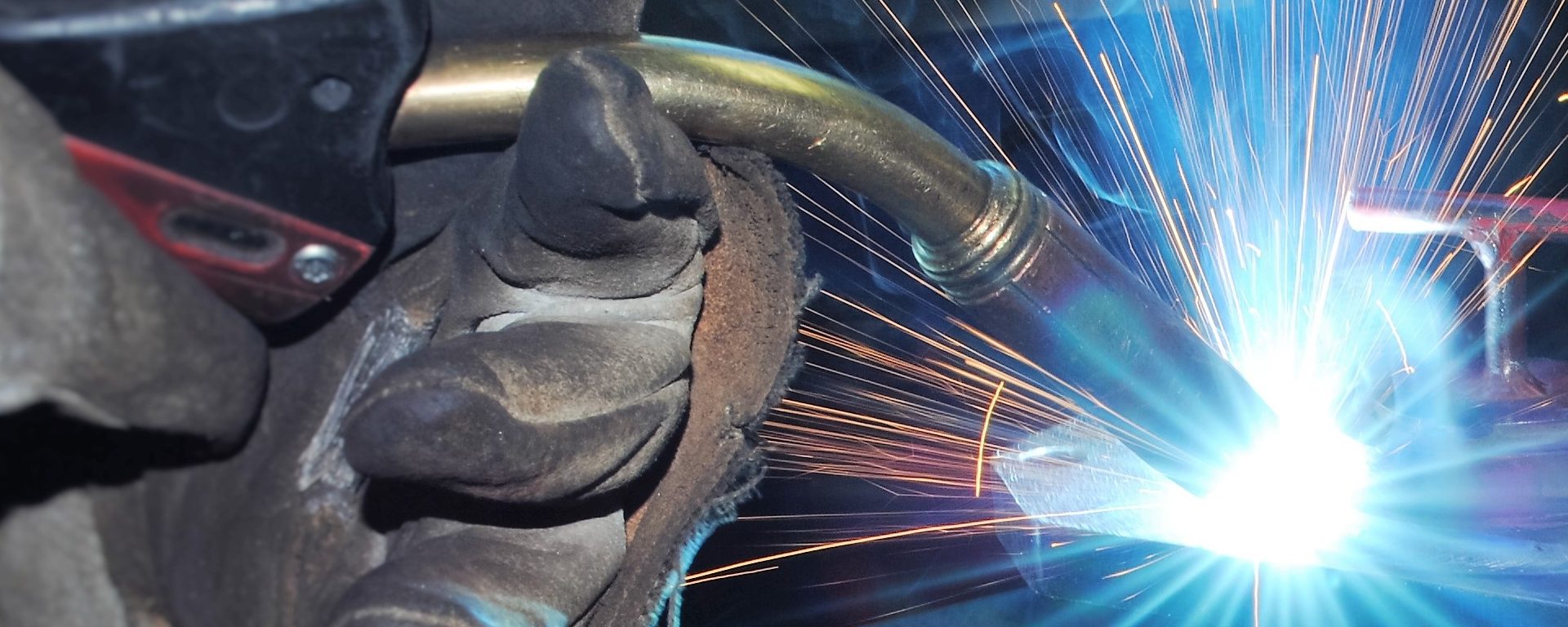Manufacturing is a booming industry. Thanks to the advancements in technology, manufacturers are churning out production at a record pace. If you want to work in a creative, hands-on field, you may be thinking about getting into welding. Welding is a fabrication process that joins and fuses materials, such as metals, together. Due to the vast application of welding — from pipework to automobiles — it is a skill that will always be in demand. If you can master this specialty within manufacturing, you will always be a value to the industry. Like many, however, you may want to get into the workforce fast. You may not want to spend a lot of time preparing for your career. So, how long is welding school? What can you expect?
Before answering these questions, we should examine the different paths you can take towards a welding career. According to the U.S. Bureau of Labor Statistics, some employers today are willing to hire welders with a high school diploma or equivalent, combined with technical and on-the-job training. Many more manufacturers, however, prefer welders who have already been through training or credentialing programs. Even hires with formal technical training still receive several months of on-the-job training.
How Long Does Welding School Take to Complete?
The length of time in welding school depends on your program of choice. Typically, a welding certificate program allows prospective welders to get an education and formal training in their specialty within a very short time. The Certificate in Welding Technology at Goodwin University, for example, may be completed full or part-time, in as few as 8 months.
The 24-credit program is a comprehensive study of the welding profession. It offers the technical training and hands-on experience that employers are seeking in welders today. Courses cover everything from welding safety and fabrication to common welding methods such as:
- Shielded metal arc welding
- Gas metal arc welding
- Flux core arc welding
- Thermal cutting
This level of education prepares welders to work on-site safely while preparing for the projects completed on the field within a manufacturing facility.
A career-oriented welding school, like the one at Goodwin, also allows students to learn on state-of-the-art machinery to create and weld complex parts using a CNC plasma table. Students can put their skills to the test using a virtual reality welding machine. They also have the opportunity to learn precise pipe alignment with an innovative Bluco table.
Why Choose Formal Welding Training?
When considering welding school, it may be easy to think of skipping it altogether. If you could jump from high school straight to your profession, why not take the easy route? Not only will a formal welding program prepare you with the skills you need to succeed, you will also qualify for more job opportunities, certification opportunities, and a higher salary, as well.
According to the latest survey by the CBIA, the growing manufacturing sector means more employers are looking for highly skilled, educated workers who can step into their roles ready to work. In Connecticut, 42% of employers are looking for candidates with postsecondary education under their belts, such as intensive training at the college-level and college certificate programs.
Launching a career in welding in Connecticut means working in one of the largest sectors of the state’s economy. In fact, the CBIA found that more than 4,000 manufacturing companies are based in the Nutmeg State. An estimated 159,000 manufacturing employers are home in Connecticut, too, earning more than $95,000 per year.
Welding offers a bright future for anyone interested in this hands-on role in Connecticut. In addition to job security and a rewarding career, welders can look forward to growth within this ever-evolving industry. Thanks to the advancements in technology, manufacturing plants are continuously improving and updating machinery for increased productivity and precision. Those who have received proper training can go into this field with an edge over the competition, ready to learn on new and improved equipment straight out of the gate.
Instead of asking yourself “How long is welding school?”, try asking yourself how much you want to break into this exciting and growing industry. Once you have earned your education and received the training needed to land the job, you will be able to enjoy a long and successful career for many years to come.
After those 8 months of training at a career-focused school like Goodwin, you will be prepared to pursue certification or entry-level employment in the field as a welder.
Are you ready to jumpstart your career in welding? Learn more about the flexible certification program available at Goodwin University by calling 800-889-3282 or visiting us online to request more information.
Goodwin University is a nonprofit institution of higher education and is accredited by the New England Commission of Higher Education (NECHE), formerly known as the New England Association of Schools and Colleges (NEASC). Goodwin University was founded in 1999, with the goal of serving a diverse student population with career-focused degree programs that lead to strong employment outcomes.

